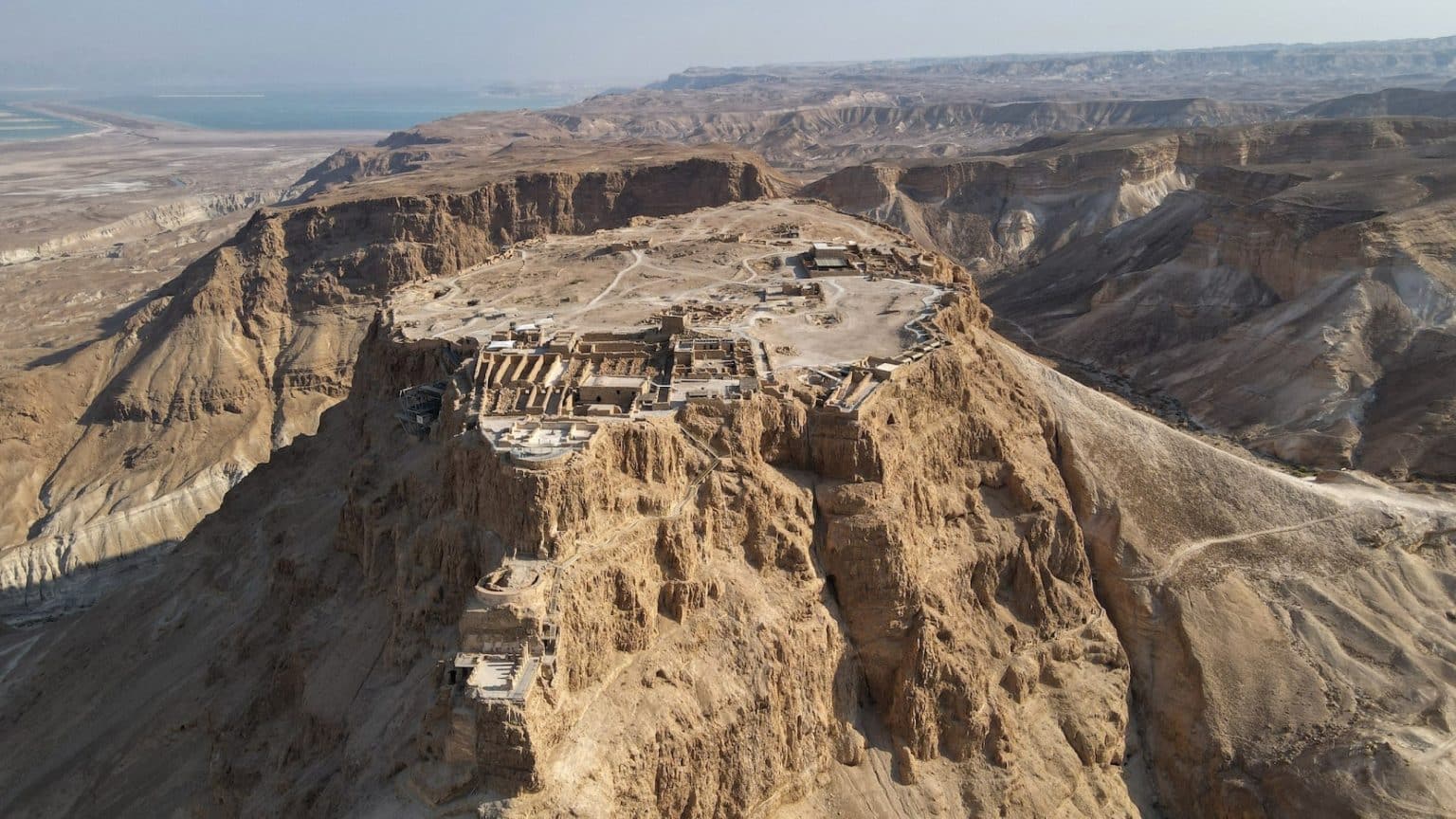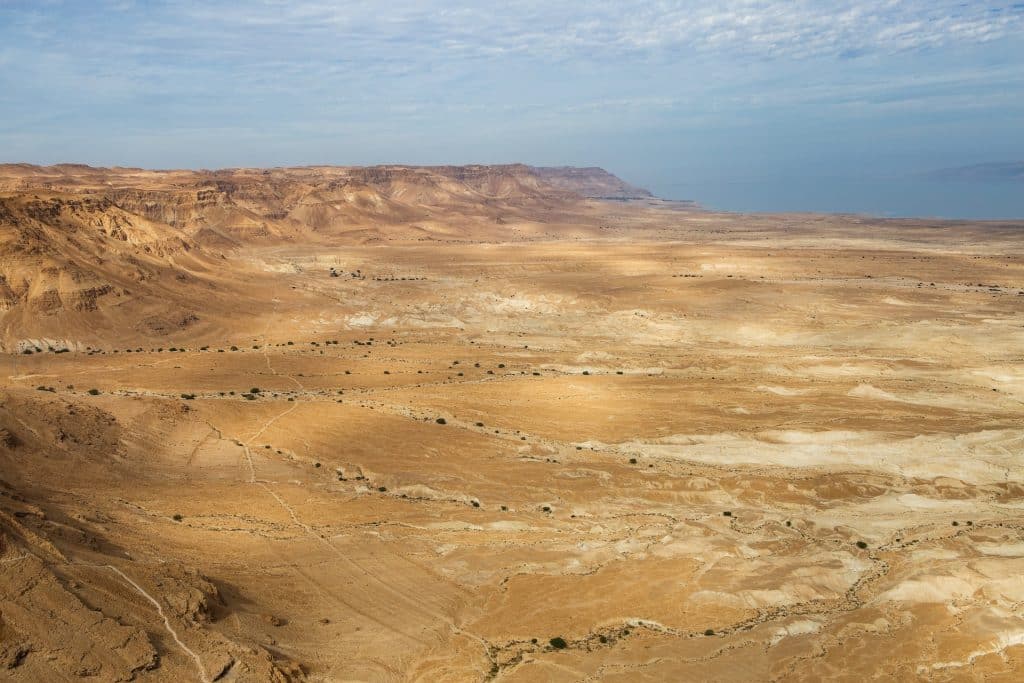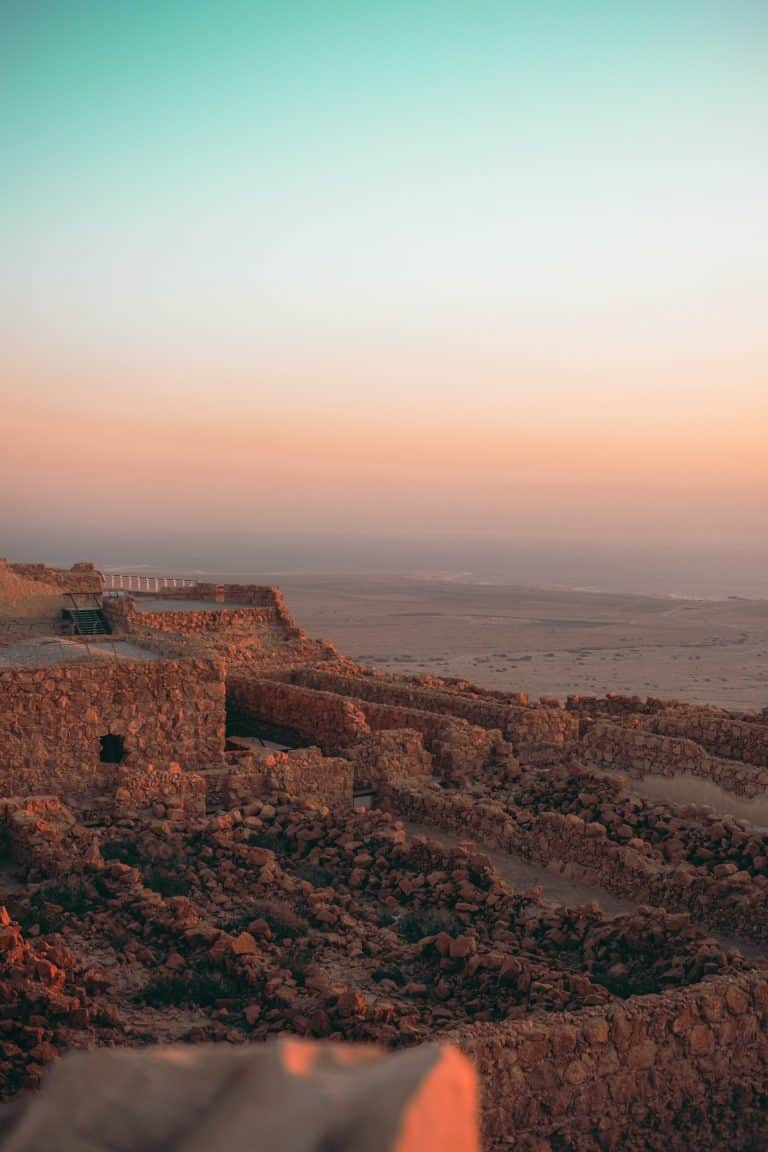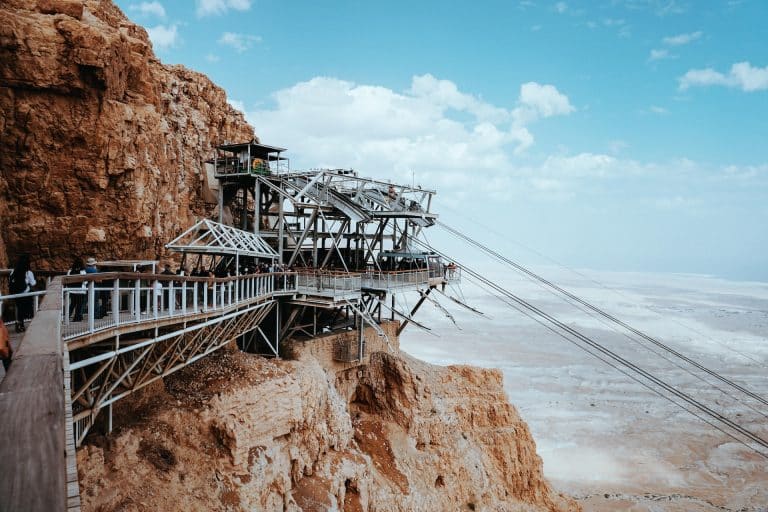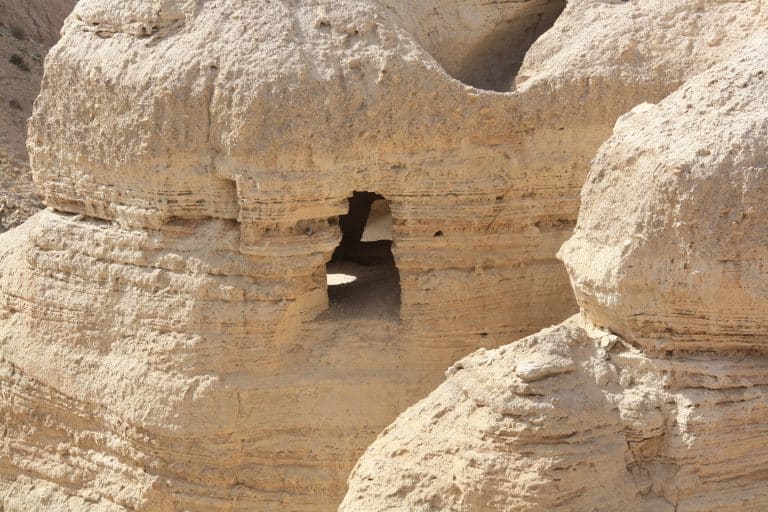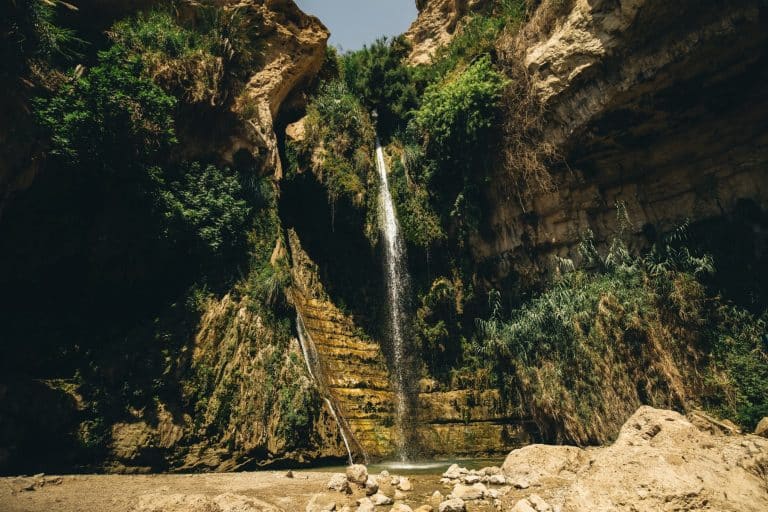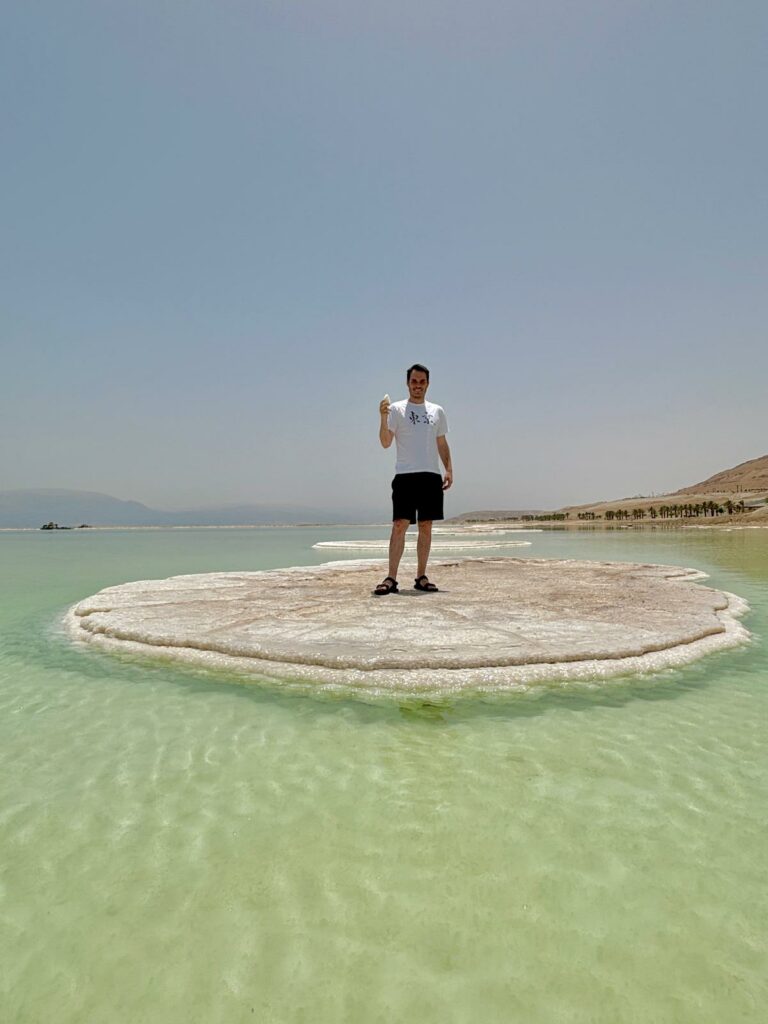As an isolated mountain at a height of 434 meters/1,424 feet, overlooking the Dead Sea to the west and the Judean Desert to the east, Masada Mountain is a site of immense historical significance, telling the story of the Great Revolt of 66-73 AD. As a UNESCO World Heritage Site, and one of the most popular places to visit in Israel, the history and views of Masada National Park are truly not to be missed. On this page, you can find everything you need to know for your visit to the stunning Masada.
What is the history of Masada?
Masada was Herod’s royal citadel and the last outpost of the Zealots during the Great Revolt in the Romans in 66-73.
The history of Masada is known thanks to the writings of Flavius Josephus, a Jewish historian who was captured by the Romans and became, with the support of Rome, the writer of the chronicles of the Jewish revolt against the Romans.
The first citadel on the mountain was built at the beginning of the first century B.C., but the main momentum of construction in the place took place several decades later, in the days of Herod. Herod wanted to establish a place of refuge far from any settlement, that would be used in the event of a rebellion against him. For these reasons, Herod chose to strengthen and magnify the structure on its side.
On Masada, Herod built a magnificent palace overlooking the Dead Sea, with a private bathhouse that was built next to it, and a barrier wall, that was built around the top of the mountain. Warehouses, residential buildings, public buildings, and many pits for storing water were also built on Masada. Large ponds were built next to the mountain to store the rainwater, which was then carried by donkeys to the water cisterns on the mountain.
During the Great Revolt, in AD 66, a group of Zealous Jews attacked the small Roman guard stationed on the isolated mountain and captured it from them. Then, in 70 AD, when Jerusalem fell and the Second Temple was destroyed, The last survivors of the Jewish rebels fled to Masada, making the magnificent palace the headquarters of the rebellion. They also built a synagogue and a Mikveh for their needs.
The Roman army reached Masada at the end of 72 AD, when There were about 960 Jews on the mountain, mostly women and children. The rebels were led by Elazar ben Yair. The Romans, numbering about ten thousand warriors, spread out around the mountain and besieged it. The siege lasted several months, during which the Romans built a ramp on the western side of the mountain up to its summit. With the help of hammers and large stones, the Romans eventually broke the Palace’s wall around the top of the mountain.
Just before the Romans succeeded in entering the fort, the leader of the rebels, Elazar Ben-Yair, gave a fiery speech, convincing all Masada’s settlers, men and women alike, that it was better to die free than to live as slaves. Then, 960 people, women, and children committed suicide together, in what is still considered the largest mass suicide in history, not before burning all the buildings and food stores so that they would not fall into the hands of the Romans.
It is said that when the Romans ascended the mountain the day after, they could not despise the losers, as they were used to in other battles, but marveled at their strength of spirit and their belief in their right to live and die as free men.
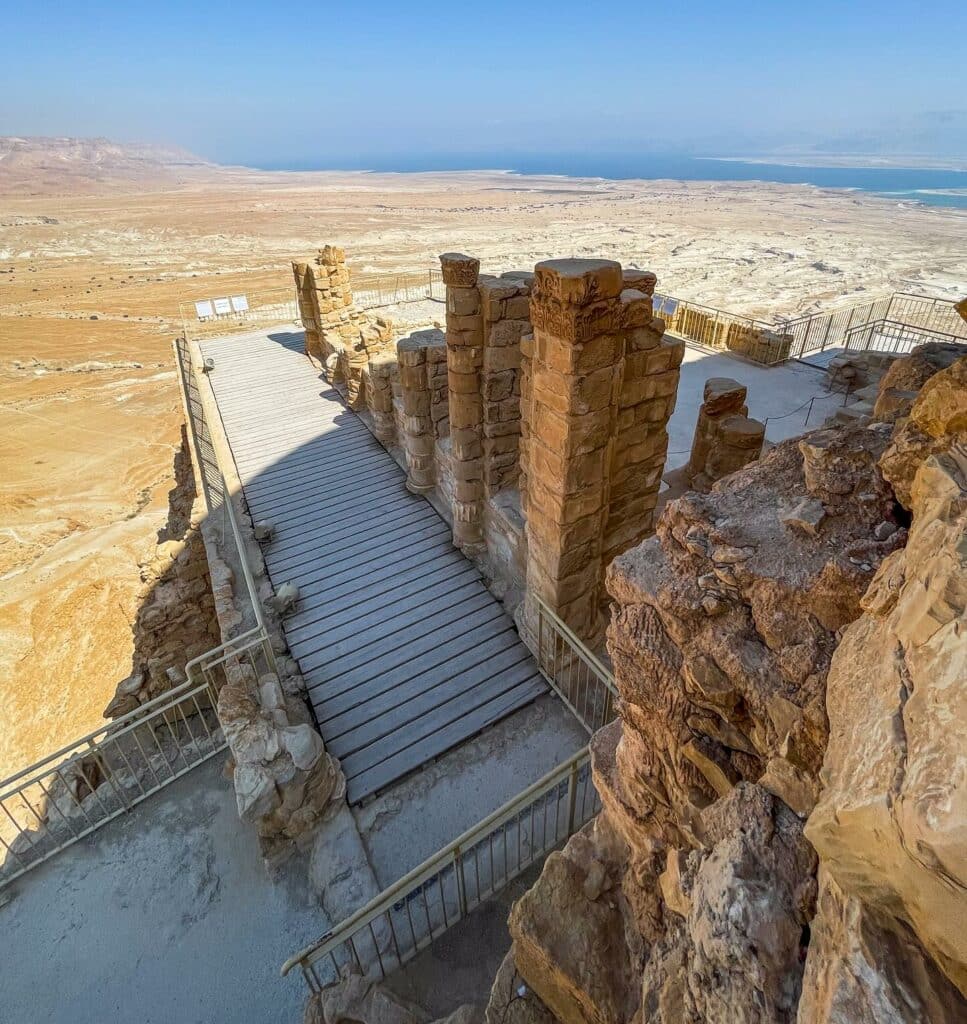
Best places to see in Masada National Park
At the top of Masada Mountain, you can explore several stunning sites, with great viewpoints and impressive architecture. Here are the most important places to see during your visit.
The Northern Palace
The remains of Herod’s magnificent private palace, on its three levels, mosaic floors, and restored wall paintings.
The northern palace is a bold structure, built on top of a mountain next to a chasm. The palace is built on three rock steps, with a total height difference of about 30 m/100 feet, and its construction required strong supporting walls.
The palace is built under the influence of Hellenistic and Roman architecture. The rooms were paved with a mosaic floor in geometric patterns, and the walls were decorated with murals. In the southwestern room, a mosaic floor with hexagonal patterns in black and white colors was preserved, a common pattern in Rome and its surroundings. A semi-circular balcony was built on the outside, which used to be surrounded by columns. The balcony overlooks the Judean Desert, the Dead Sea, and the Roman siege system. The palace also had a small bath house, where the remains of three human skeletons, assumed to be rebels, were discovered. In the bathhouse, incredibly preserved woman’s braids were discovered.
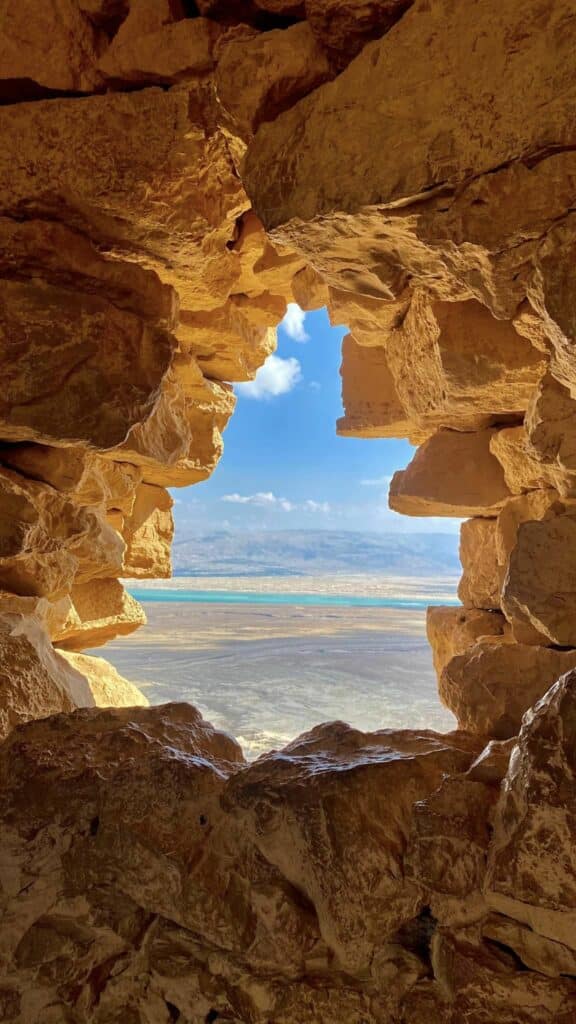
The Western Palace
This is the largest building in Masada and it was also built by Herod. Its area is about 4,000 square meters and it includes remains of residences, a reception hall, bathrooms with mosaic floors, toilets, workshops, and warehouses.
Masada Synagogue
One of the oldest synagogues in the entire world – was used by the Zealots after the Seconds temple in Jerusalem was destroyed.
How to get to Masada?
Taking an organized day trip to Masada
Opting for an organized day tour is an ideal way to experience Masada and the Dead Sea. These tours simplify the travel process by handling all logistics, including transportation and entry tickets, ensuring a hassle-free adventure. You’ll benefit from the expertise of knowledgeable guides who offer rich historical and cultural insights into Masada, enhancing your visit. The convenience of an organized tour also means enjoying the peace of mind that comes with safety and reliability, as these tours follow well-established routes and adhere to strict safety standards.
Traveling from Tel Aviv to Masada and the Dead Sea
For those based in Tel Aviv, a day tour from Tel Aviv to Masada and the Dead Sea is a convenient option for exploring these iconic destinations. The journey, while shorter than a trip to Petra, allows you to experience inspiring fortress of Masada and the unique waters of the Dead Sea in comfort, usually aboard a deluxe tour bus.
A typical day trip from Tel Aviv to Masada and the Dead Sea includes early departure to beat the heat and crowds at Masada, where you’ll ascend by cable car to explore the fortress and hear tales of its siege and dramatic history. Following the visit to Masada, the tour heads to the Dead Sea, allowing you time to float in its salty waters and enjoy the mineral-rich mud.
Traveling from Jerusalem to Masada and the Dead Sea
Departing from Jerusalem, a day trip to Masada and the Dead Sea offers a blend of historical intrigue and natural beauty. The journey starts early, taking you through the Judean Desert, offering breathtaking views and an opportunity to see dawn break over the desert landscape. Upon reaching Masada, you’ll explore the site with a guide who brings its storied past to life. The trip then continues to the Dead Sea, where you can relax and rejuvenate in its therapeutic waters.
These organized tours ensure a comprehensive experience, including transport in an air-conditioned vehicle, a knowledgeable guide, entrance fees, and refreshments.
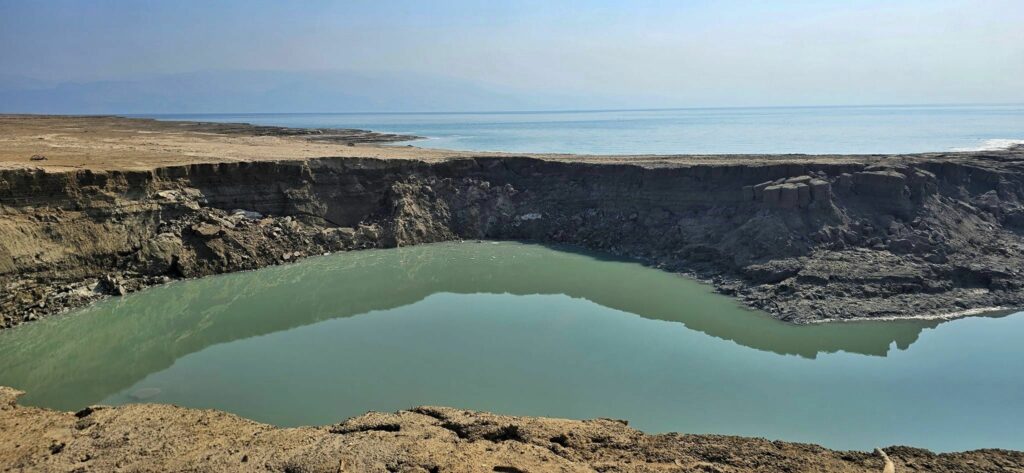
Getting to Masada on your own
Visiting Masada is a journey that combines history with breathtaking landscapes. If you’re driving from Tel Aviv, prepare for a long drive, as it takes approximately two and a half hours to reach the fortress. Alternatively, if you’re coming from Jerusalem, the drive is shorter, around 1.5 hours, making it a more accessible option for many travelers.
Once you arrive at Masada you have the following options up the mountain:
Masada Cableway
The easiest and most popular option to go up the Mountain, the Masada Cableway is gonna get you to the top of the mountain within a few minutes of a scenic ride. The cableway leaves from Masada National Park Visitor Center, and climbs 224 meters/735 feet. If you are interested in doing some hiking in Masada, you can also choose the popular option of going up by the cableway and going down on foot.
Masada Cableway fees:
One way: adults – 28 ILS, children – 14 ILS
Two ways: Adults: 46 ILS, children – 28 ILS
Masada Snake Path
The path, which is located on the eastern side of the mountain, leaves from the Masada National Park Visitor Center and is the most popular hike in Masada National Park. The “Snake Path” is named so because of its steepness and winding path. The route climbs to a height of 350 meters and is about two kilometers long, with about 900 steps along the path.
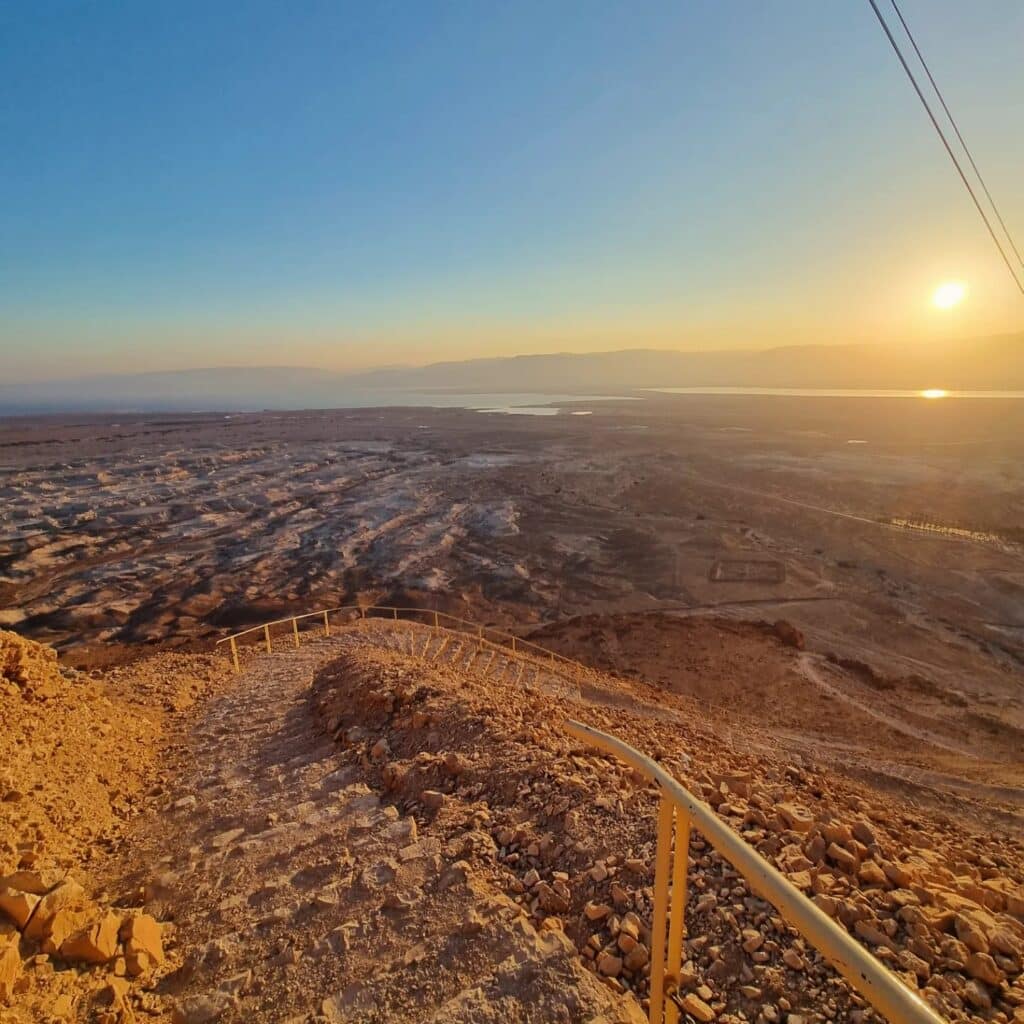
Masada “Roman Ramp” Path
A much shorter and easier path, which climbs up only about 700 meters/0.43 miles. The trail goes up the ramp which was built by the Romans, to take back Masada during The Great Revolt. Although this hike is much shorter, it leaves from the western side of Masada Mountain, which is much harder to access by car and is not accessible by public transportation.

